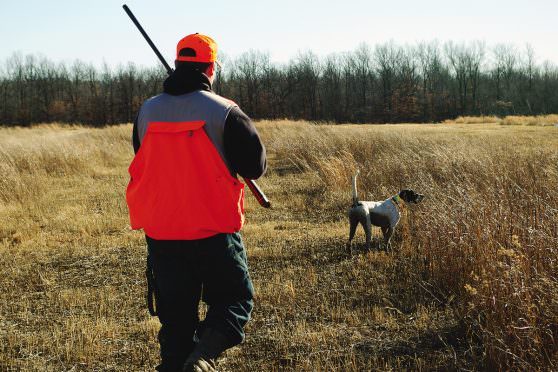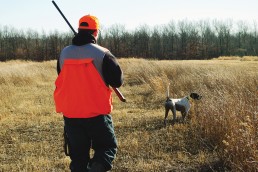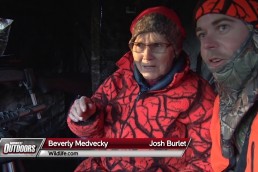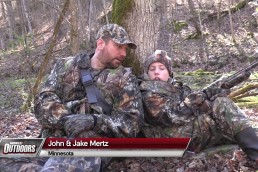Anyone Can Hunt Coyotes in the Midwest: Filling a gap in the hunting calendar
SHARE THIS POST
It’s not just for the varmint specialists anymore—interest in coyote hunting is growing. Some say it has even become the fastest-growing hunting sport in the nation. During the past few years I’ve also been surprised to learn that the articles I’ve written about coyote hunting have received more positive response than any other subject I’ve done. Coyote hunting is filling that gap in the sportsman’s calendar in deep winter when there are few open legal seasons.
Part of the reason is that coyotes are everywhere, and in many areas their bulging populations are invading the backyards of suburbia to snatch small dogs and cats. But I believe the biggest reason for the increased interest is from a conservation angle.

Like the majority of hunters, I was raised with the idea that an ethical hunter only kills what he intends to eat. As the saying goes: “That’s the way I was raised.” Gradually, I began to realize that an unchecked proliferation of predators throws the natural balance of nature off. Setting aside and creating habitat is only a part of the answer, and even though we have done that to a degree, we still have very little upland game and non-game species to show for it.
Habitat is very important. But it doesn’t matter how much you create or how many rabbits and birds it nurtures if they’re all gobbled up by coyotes, foxes and bobcats before they are half grown. The unintended effect of CRP and many state and federal habitat restoration programs is that they’ve created a smorgasbord for predators and has contributed to their bulging overpopulation.
Like me, many sportsmen have come to coyote hunting with a conservation-minded justification as we’ve come to realize that with each coyote life we end, we save countless numbers of other animals and birds that we like to hunt, see or hear. During the process, we’ve found that hunting these cautious, crafty beasts combines the stealthy challenge of deer hunting with the excitement of calling turkeys.
Are you enjoying this post?
You can be among the first to get the latest info on where to go, what to use and how to use it!
Unlike deer hunting, it’s not necessary or advisable to sit in one position for hours and freeze. If a coyote doesn’t come running or sneaking in within 30 minutes or so, it’s then time to move and set up somewhere else. Many hunters, including myself, find this more active pursuit continually exciting and more enjoyable.
Calling turkeys, ducks, geese and elk adds a special element to a hunt. If you enjoy any of these pursuits you’ll love coyote hunting too because calling is the foundation of the pursuit. However, you don’t necessarily need to be an expert to make it work.

Like turkey hunting, full camouflage and making your setup in the shadows of a thick area are important. And like deer hunting, utilizing wind direction and performing scent masking is imperative. If these basics of hunting are followed, I believe anyone can blow into a dying rabbit call and have coyotes come running. Nor do you need specialized weaponry. Flat-shooting varmint calibers and highly magnified scopes might be necessary in the wide open Big Sky Country of the West, but in the forests and woodlots of the Midwest, any weapon will do. In close quarters, even a shotgun with BB shot will work. Any rifle you might use on deer will work for coyotes. A 12 gauge is best for quick shots at close rage, and .223 caliber or similar varmint calibers are best for distances over 100 yards. The most versatile Midwestern coyote gun probably is one that combines the two in an over/under configuration.
You also don’t need to be an expert caller, be expert shooter or invest in specialized equipment to get in on this sport. Once you try it and realize what you’ve been missing, you may then want to get into the more expert angles.
In most Midwest states there is no closed season or limit on coyotes, but most hunting takes place during midwinter to late winter like now in February when coyotes’ pelts are full and luxurious. Now is also the best time to hunt them because this is when their natural food sources are dwindling and they respond more to calls. The best coyote hunting of all is on public hunting and wildlife management areas that have created ideal conditions for coyotes to feed. The more intensively the area is managed for upland game, the more coyotes they can support.
MWO
SHARE THIS POST
Did you enjoy this post?
You can be among the first to get the latest info on where to go, what to use and how to use it!
Ron Kruger
Ron Kruger has been communicating the outdoor experience for more than four decades. He has worked as a full-time guide for trout on the North Fork, for crappies and bass on Kentucky Lake and for smallmouths on the Current River. He has served as editor of three outdoor magazines, and owns a patent on a fly/lure called the Desperate Diver.



